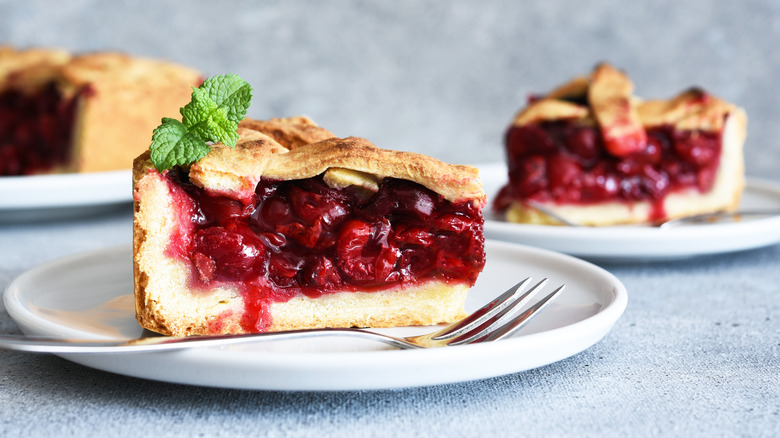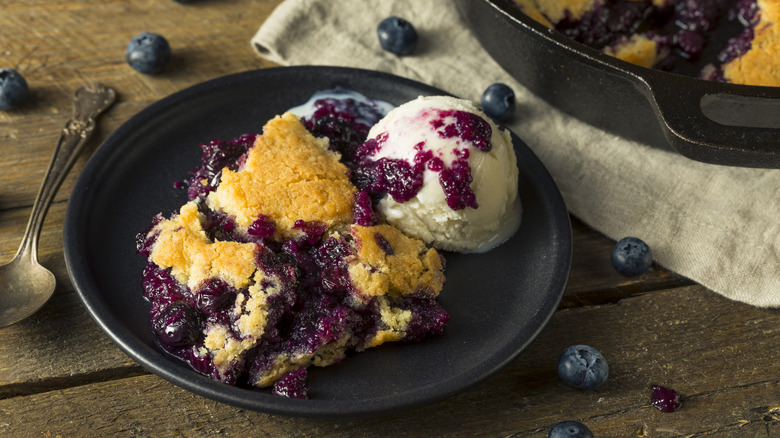What Makes Pie Different From Cobbler?
The best way to culminate a delicious meal is often with a sweet treat and whether that happens to be a fiery masterpiece or a quick and easy dessert, it's sure to be enjoyed by just about everybody at your dinner party. Quite a few dessert classics are fruit-based, like apple pie or blueberry cobbler, and are often accented by a buttery, browned shell, crust, or crumbly topping. These baked goodies are delicious when served warm and they pair nicely with a rich vanilla ice cream (we suggest homemade if you're up for the challenge), so it's not surprising that fruity desserts have been delighting taste buds for thousands of years.
The history of pie actually dates back to the ancient Romans, who filled a flour and oil paste with meat, according to What's Cooking America. Years later, as the English settlers arrived to America, their creativity led to sweet new recipes, as well as a variety of improvised baked goods, including crisps, crumbles, buckles, and, of course, cobblers.
Although they have many commonalities, you may be surprised to learn one key difference sets pie and cobbler apart.
Crust versus topping
The similarities between a fruit pie and a fruit cobbler are easy to recognize, but the big difference is a little more elusive at first glance. According to Wide Open Eats, pies can have a single bottom crust or both a top and bottom layer, but true cobblers will only feature a top crust. Now, the method of creating that topping is where the magic really happens. Some cobblers are fully-covered by a delicious traditional crust, while others feature biscuit toppings and flavorful accent ingredients, like this huckleberry cobbler with a macadamia nut biscuit crust.
According to Canadian Living, the cobbler's name may have come from the cobblestone appearance of the biscuit topping. They also mention the almost imperceptible differences from similar desserts (such as slumps, pandowdies, and grunts) that feature a fruit-and-dough combination. For example, a grunt has the same biscuit topping as a traditional cobbler, but is actually steamed via stovetop instead of baked.
For less dough and all of the flavor try a quick crumble topping that will highlight whichever fruit you opt for as a filling. When it comes to cobblers or pies, the fruit can be what's in season locally or what you have in your kitchen, and the main ingredients can typically be swapped out if you find a particular recipe that sounds perfect. You may even find multiple fruits that mix perfectly together, such as apple and pear or strawberry and rhubarb, and work well as a pie, cobbler, or even galette.

